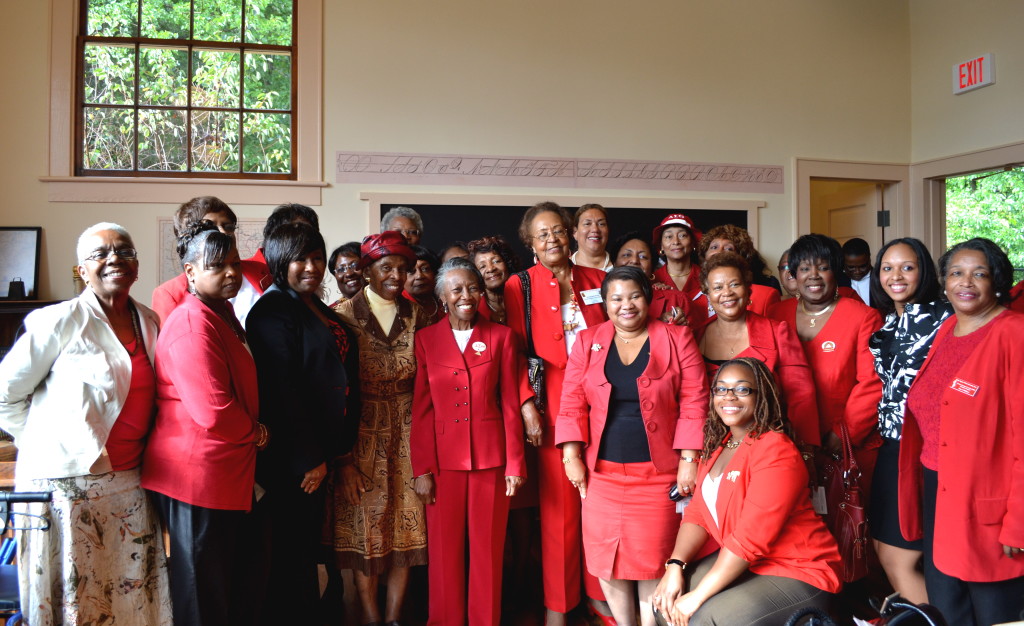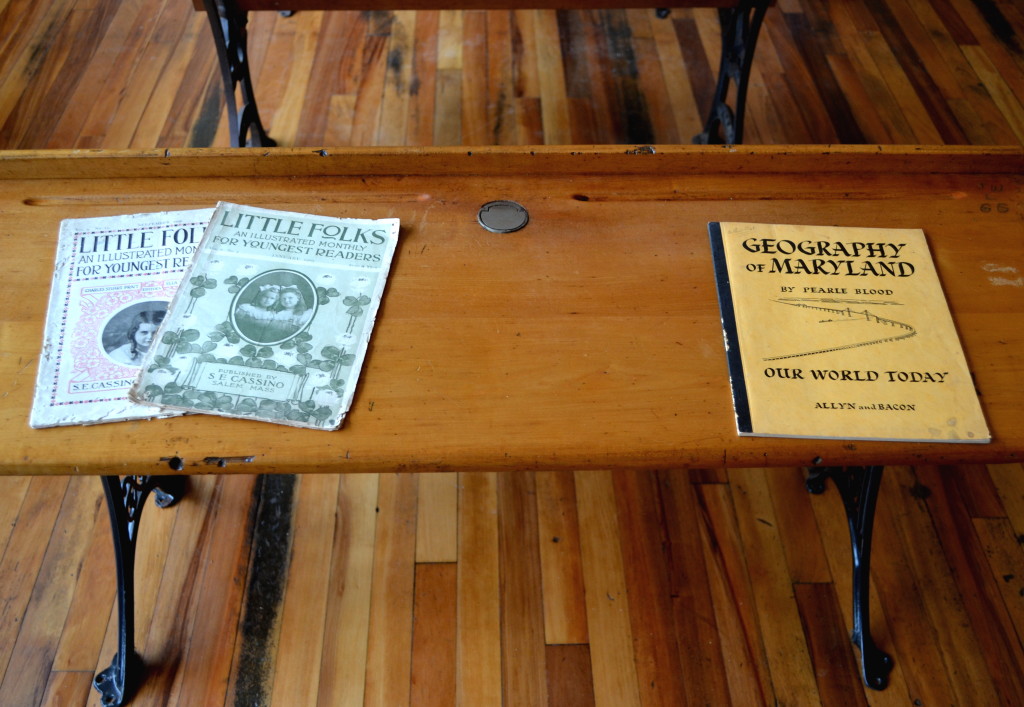by Cieslafdn | May 30, 2013 | School Restorations
The National Trust for Historic Preservation’s Rosenwald School Centennial Fund, made possible through a grant by the Righteous Persons Foundation, has released its inaugural list of grants to Rosenwald Schools currently undergoing restoration, including:
•$10,000 to the Chattahoochee County Historic Preservation Society in Cusseta, GA, for the restoration of the Cusseta Industrial High School
•$8,000 to the Castalia Community Development Corporation in Castalia, NC, for the Castalia Rosenwald School
•$20,000 to CrossRoads Corporation for Affordable Housing and Community Development, Inc., for the Billingsville School in Charlotte, NC
•$13,150 to West Rowan Neighborhood of Cleveland, NC, for the R.A. Clement Rosenwald School
•$20,000 to Lincoln County for the Oaklawn Rosenwald School in Lincolnton, NC
•$20,000 to Pleasant Hill Baptist Church in Westminster, SC, for the Retreat Rosenwald School
•$5,000 to the Shady Grove School in Gum Spring, VA
For more info, click here.
by Cieslafdn | May 20, 2013 | School Restorations
Preservation Virginia has released its yearly list of endangered historical sites (read more at the Washington Post). This year, the list includes the Rosenwald Schools of Virginia.
According to Preservation Virginia’s website, “Rosenwald Schools often are overlooked as symbols of the 20th century advancements in African American education that they poignantly represent.” Compared to the more high profile sites that Preservation Virginia lists as endangered, such as Arlington National Cemetery, the Rosenwald Schools are much less well-known. Restoration of the small rural buildings, while modest in scope compared to other preservation projects, is typically the work of a small group of alumni and rarely finds much support from outside its immediate community. The National Trust for Historic Preservation has taken a leadership role in supporting these small scale, community-driven restoration projects, but even within the challenging field of historic preservation, these projects are uniquely difficult.
Let’s hope that Preservation Virginia’s press release leads to more success stories like the Scrabble School, a Rosenwald School in Rappahannock County, Virginia that was restored and reopened in 2009.
By Michael Rose
by Cieslafdn | Apr 4, 2013 | School Restorations
On Daufuskie Island, one of a chain of sea islands along the coast of South Carolina and Georgia, sits a one-room schoolhouse called the Jane Hamilton School. From the outside, it looks very much like a Rosenwald School, but it was actually fully funded by the immediate community and constructed by local tradesman as well as WPA workers. The Rosenwald Fund provided funding to over 5,000 schools across the south, but this historical building is an example of the many additional schools that were built not with Rosenwald Fund money but with Rosenwald School plans. Beyond providing architectural plans, the Rosenwald Fund’s school-building program served as a demonstration to all people that communities suffering under segregation could come together to improve local education facilities even if assistance from state and federal government was withheld.

Community School Plan No. 1A, as seen on a plaque in front of the Jane Hamilton School
Photo credit: Christine M. Rose, April, 2013
The school was built on Daufuskie Island (near Savannah, Georgia) for the Gullah children of the island community. The Gullah people are the descendants of slaves from West and Central Africa whose language and culture incorporates influences from the African nations their ancestors lived in centuries ago. For many years, even into the twentieth century, this was a place that was somewhat cut off from the mainland (even today there is no road connection) and this isolation served to preserve the vibrant Gullah folk culture and language, especially after an influx of freed slaves moved to this region in the wake of the Civil War. Today, the Gullah culture is dispersing geographically to an extent (the Gullah population on sea islands like Daufuskie has declined) but there are local and national movements to preserve cultural landmarks like the Jane Hamilton School. A 1991 film, Daughters of the Dust, by Julie Dash, that tells an inter-generational story in a Gullah community around the turn of the twentieth century, introduced many people to the Gullah culture.

The Jane Hamilton School, Daufuskie Island, SC
Photo credit: Christine M. Rose, April, 2013
One aspect of the Rosenwald Schools that is often recalled by alumni is the large windows and the buildings’ orientation towards the sun (to maximize natural light). This style is clearly evident in the Jane Hamilton School: one side of the building is full of large windows (see the photo below) while the other side (see the above photo) utilized small “breeze windows,” placed high up to allow airflow to the classroom while blocking out the view of the street so children would not be distracted by passersby.

Interior of the Jane Hamilton School
Photo credit: Christine M. Rose, April, 2013
Today, the Jane Hamilton School serves as the Gullah Learning Center, a community center where elections are held, with historical exhibits about the school and the Gullah community and a library. The building (which dates from 1940, 8 years after Julius Rosenwald’s death) is a great example of historical preservation as well as a demonstration of the extended influence of the Rosenwald Fund even beyond the 5,000+ schools it directly funded.
By Michael Rose
by Cieslafdn | Feb 11, 2013 | School Restorations
Abandoned Arkansas, a photography website, has published a gallery of images of a neglected Arkansas Rosenwald school. Members of the community are attempting to restore the school, which also served as a community center after the end of its life as a school building in 1964. It’s fascinating to see these images of the deteriorating building – hopefully they will inspire people to bring the school back to its former glory.
 The Bigelow Rosenwald School, Perry County, Arkansas, 2012
The Bigelow Rosenwald School, Perry County, Arkansas, 2012
Photo credit: Jimmy Emerson, flickr
Click here for a historical image of the school from Fisk University’s Rosenwald School database.
By Michael Rose
by Cieslafdn | Jul 24, 2012 | School Restorations
On Tuesday, July 17th, William Raspberry, Pulitzer Prize-winning journalist for The Washington Post, passed away in his home. In almost forty years as a columnist (he retired in 2005) Raspberry wrote thousands of opinion pieces in which he carved out a complicated ethical position on racial politics, urban violence and the importance of education. Raspberry was raised by two teachers in Okolona, Mississippi; his mother, Willa, who, at 106, still lives in Indianapolis and his father, James, who died at 89 in 1991.
On the occasion of his father’s funeral in 1991, Raspberry remembered him in a column in The Washington Post as a passionate and committed educator, recalling how in 1918 his father helped construct a Rosenwald school in a rural community in Mississippi. “He would spend part of the day teaching students—often under a tree—and the rest building the school,” (“Gifts of a Good Man,” The Washington Post, June 12, 1991). According to Mississippi Women: Their Histories, Their Lives, by Martha H. Swain, Elizabeth Anne Payne and Marjorie Julian Spruill, the school was in Dorsey, Mississippi. James Raspberry moved on from there to serve as principal in another Rosenwald School in Friendship, Mississippi, where he met William’s mother, Willa Tucker, an English teacher at the same school. Raspberry remembered in his early life that his parents’ home was a place where the children of extended family members would stay during the school year because their hometowns had no schools open to African Americans.
In his final column in 2005, Raspberry spoke about his own contribution to the improvement of education in his home state of Mississippi, a state that has some of the worst educational outcomes in America. Raspberry founded “Baby Steps” in Okolona, an organization that works to break the cycle of low achievement in school by engaging both children and parents in developing a positive home environment. Raspberry’s contributions to education as an adult can be traced back to his own positive early family life. In his final column, he also spoke of his belief that “pulling a community together around the future of its children can do wonders to transform both”, a statement that resonates strongly with the story of Rosenwald Schools. His passing was truly a loss and we regret missing the opportunity to add his voice to The Rosenwald Schools as an interview subject.
By Michael Rose
by Cieslafdn | Sep 9, 2011 | School Restorations

The newly restored Ridgeley Rosenwald School on the day of its momentous dedication.
On September 7, 2011, eighty-four years after its construction in 1927, the historic Ridgeley School celebrated its dedication as a Rosenwald School. Located in Capitol Heights, Maryland the single story building consists of three classrooms, two cloakrooms and a wealth of history. Ridgeley was established as a result of the extraordinary philanthropic efforts of Julius Rosenwald and his work with the African American communities of the South. A Rosenwald school, built specifically for African American children before the integration of public schools, was not simply a schoolhouse, but more so a symbol of opportunity. Once one of 28 Rosenwald schools in Prince George’s County, today Ridgeley is one of nine that remain, sitting atop two acres of land sold to the Prince George’s County Board of Education (BOE) by Mary Eliza Ridgeley.
The ceremony welcomed community figures from the Maryland State Legislature, Prince George’s County Planning Board, the Department of Parks and Recreation Staff, and the Alumnae Chapter of the Prince George’s County Delta Sigma Theta Sorority who helped restore the building. Most notable was the presence of the driving force for the restoration, ninety one year old Mildred Ridgeley, daughter of Mary Eliza Ridgeley, and a former student of the school. Her daughter, La Verne Gray, offered stirring remarks to close the ceremony. A number of other local dignitaries addressed the crowd and the tribute saw its successful conclusion in the ribbon-cutting finale. Although the weather called for a gloomy day of rain and storms the inside of the Ridgeley Rosenwald School was filled with warm stories that illuminated the room
A living testament to its origins, the restored school will be available for programs to educate the public on Ridgeley’s incredible history and additionally function as a museum with historic memorabilia and replicas representative of the classrooms at the time of their creation. The school will also be offered for community meetings, events and organizations.

A restored classroom shines on the day of the dedication.

The pioneering Mildred Ridgeley Gray, with Chairman Elizabeth M. Hewlett, receives a standing ovation.

An old-fashioned furnace stands at the back of a classroom.

The Prince Geroge’s County Delta Sigma Theta Sorority Alumnae Chapter, partial funders for the restoration project, smile for the camera and at their success.

Photographs of the remarkable Abraham Lincoln, Booker T. Washington, and Julius Rosenwald line the wall above a classroom chalkboard.

Taking the podium La Verne Gray passionately concludes the ceremony.

A desk displays replicas of books studied in the classroom.

Mildred Ridgeley Gray, along with members of the community, cuts the ribbon at the conclusion of the ceremony.

A shelf contains replicas of school materials used at Ridgeley.
Photographs by Rachel Lesaar















Recent Comments